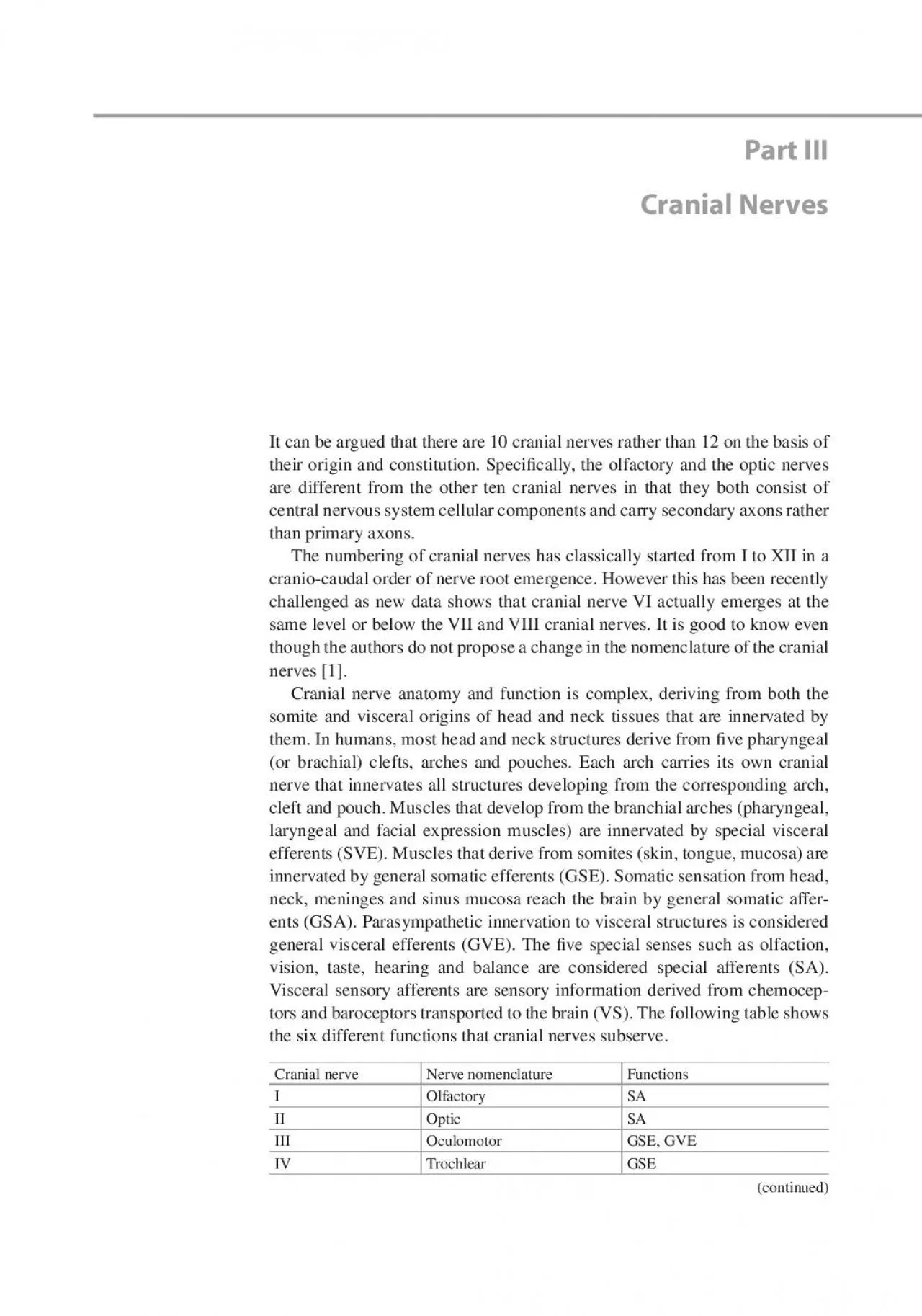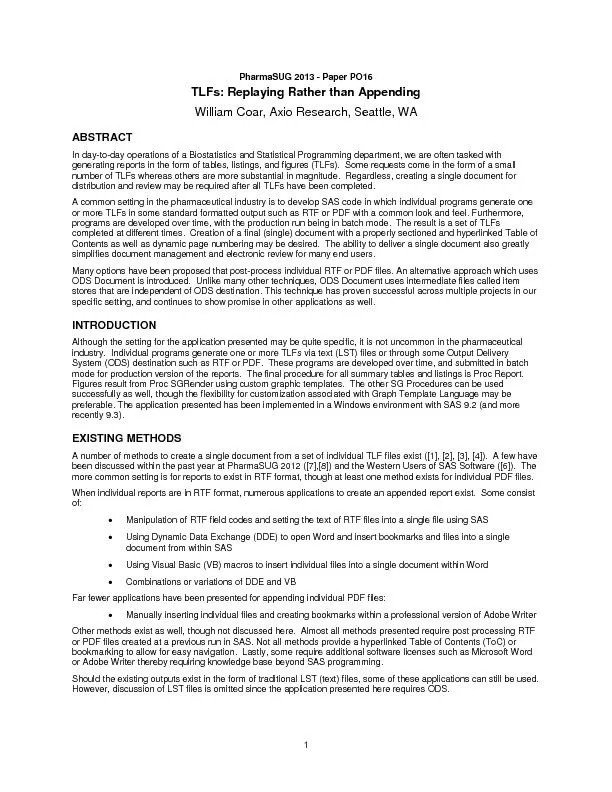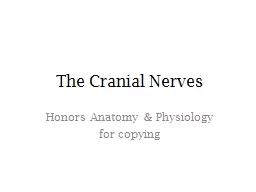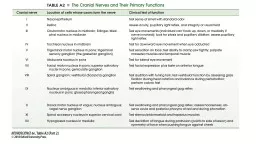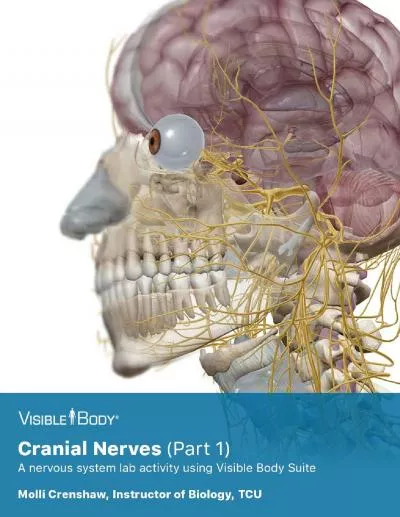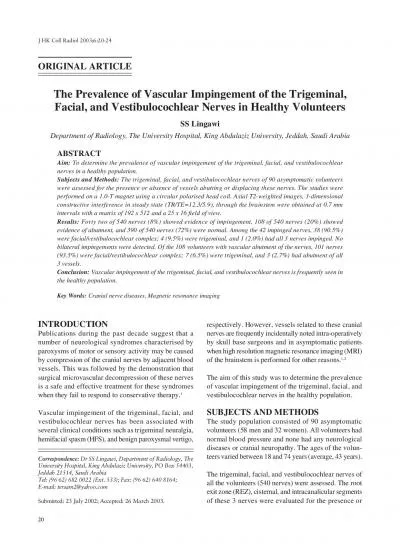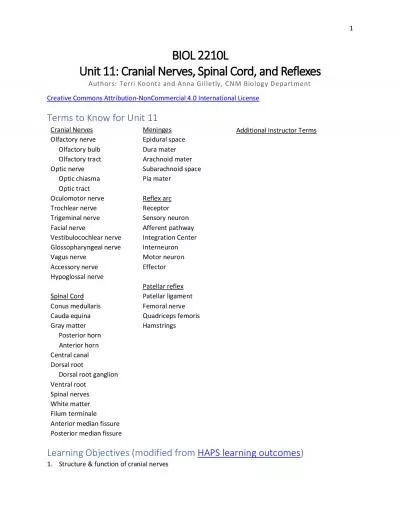PDF-It can be argued that there are 10 cranial nerves rather than 12 on th
Author : gabriella | Published Date : 2022-08-25
Cranial nerveNerve nomenclatureOlfactoryTrochlear 168 Cranial nerveNerve nomenclatureTrigeminalGSA face oral cavity FacialGSA skin mucosa external facial muscles
Presentation Embed Code
Download Presentation
Download Presentation The PPT/PDF document "It can be argued that there are 10 crani..." is the property of its rightful owner. Permission is granted to download and print the materials on this website for personal, non-commercial use only, and to display it on your personal computer provided you do not modify the materials and that you retain all copyright notices contained in the materials. By downloading content from our website, you accept the terms of this agreement.
It can be argued that there are 10 cranial nerves rather than 12 on th: Transcript
Download Rules Of Document
"It can be argued that there are 10 cranial nerves rather than 12 on th"The content belongs to its owner. You may download and print it for personal use, without modification, and keep all copyright notices. By downloading, you agree to these terms.
Related Documents

